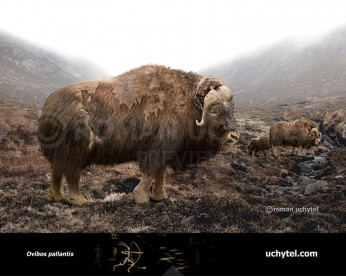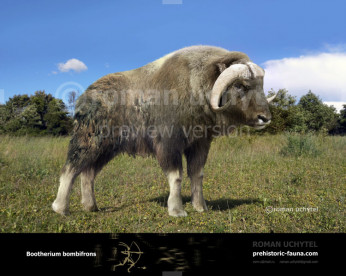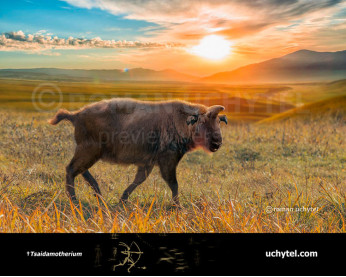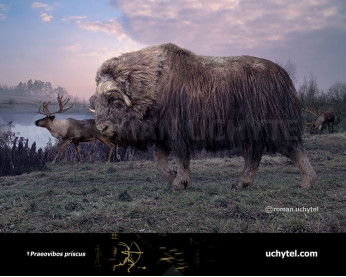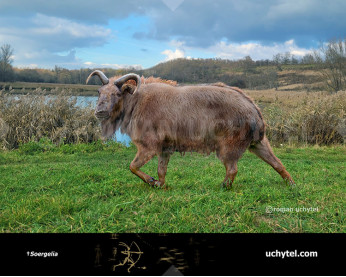Euceratherium collinum
303303Euceratherium (†Euceratherium Furlong & Sinclair, 1904)
Order: Artiodactyla
Family: Bovidae
Subfamily: Caprinae
Temporal range: from the early to late Pleistocene of North America (extinct about 11,500 years ago)
Dimensions: length - 2,5 m, height - 150 сm, weight - 600 kg
The shrub-ox (Euceratherium collinum) is an extinct genus and species of Bovidae native to North America.
Euceratherium was one of the first bovids to enter North America. It appeared on this continent during the early Pleistocene, long before the first bison arrived from Eurasia. It became extinct about 11,500 years ago.
Late Pleistocene shrub-ox remains are known from fossil finds spanning from northern California to central Mexico. In the East they were distributed at least into Illinois.
Euceratherium was massively built and in size between a modern American bison and a musk ox. A specimen was estimated to have a body mass of 607.5 kg. On the basis of preserved dung pellets, it has been established that they were browsers with a diet of trees and shrubs. They seem to have preferred hilly landscapes.
From Wikipedia, the free encyclopedia
Euceratherium (†Euceratherium Furlong & Sinclair, 1904)
Order: Artiodactyla
Family: Bovidae
Subfamily: Caprinae
Temporal range: from the early to late Pleistocene of North America (extinct about 11,500 years ago)
Dimensions: length - 2,5 m, height - 150 сm, weight - 600 kg
The shrub-ox (Euceratherium collinum) is an extinct genus and species of Bovidae native to North America.
Euceratherium was one of the first bovids to enter North America. It appeared on this continent during the early Pleistocene, long before the first bison arrived from Eurasia. It became extinct about 11,500 years ago.
Late Pleistocene shrub-ox remains are known from fossil finds spanning from northern California to central Mexico. In the East they were distributed at least into Illinois.
Euceratherium was massively built and in size between a modern American bison and a musk ox. A specimen was estimated to have a body mass of 607.5 kg. On the basis of preserved dung pellets, it has been established that they were browsers with a diet of trees and shrubs. They seem to have preferred hilly landscapes.
From Wikipedia, the free encyclopedia

-797x638.jpg)
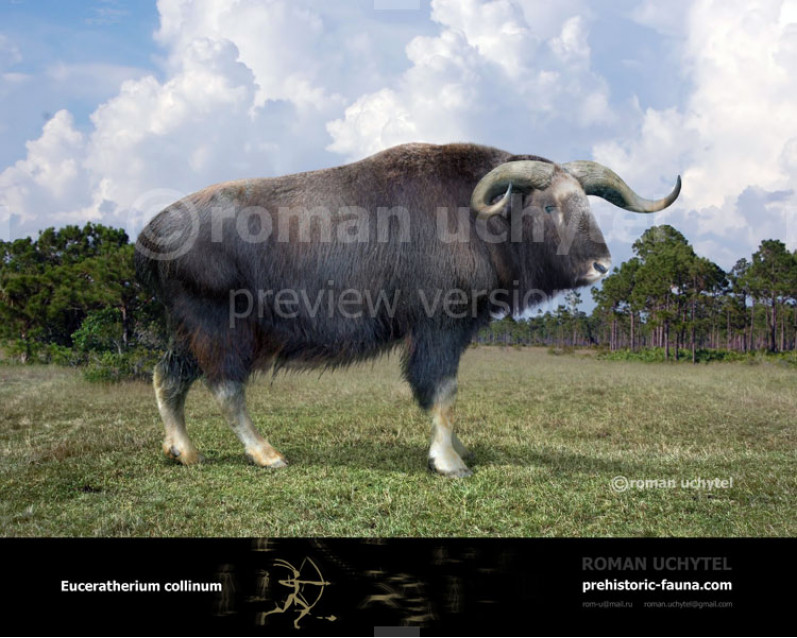
-797x638.jpg)
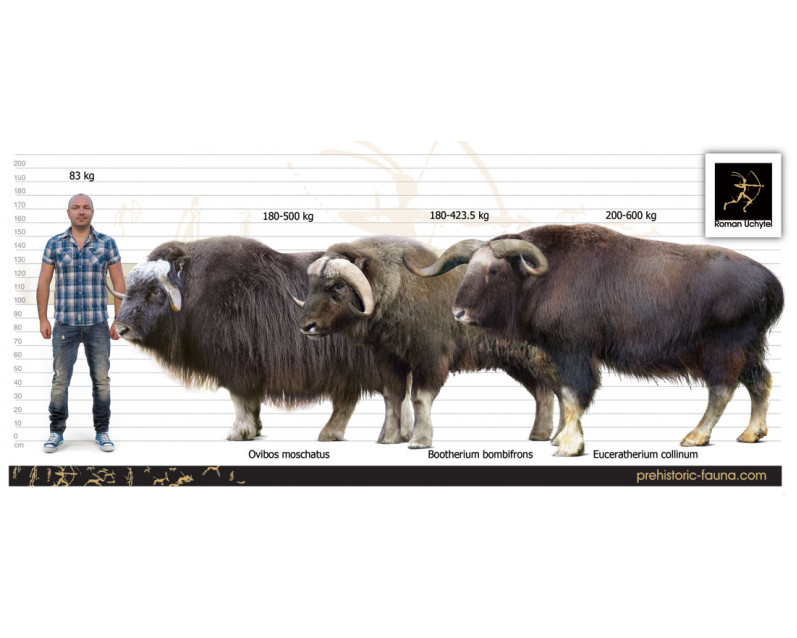
-70x56.jpg)

-70x56.jpg)

